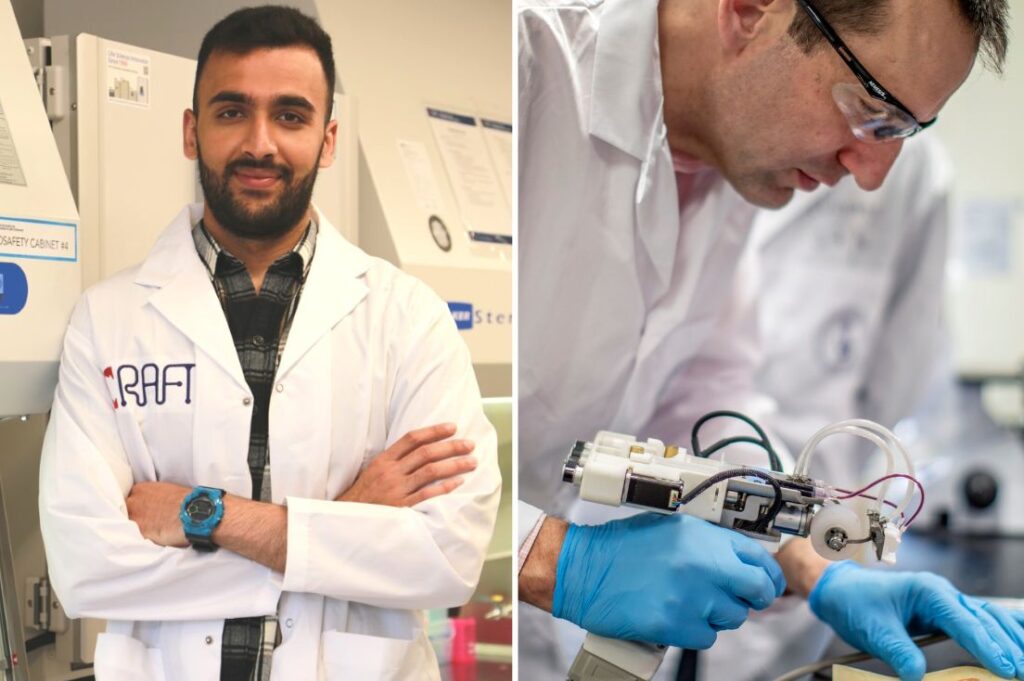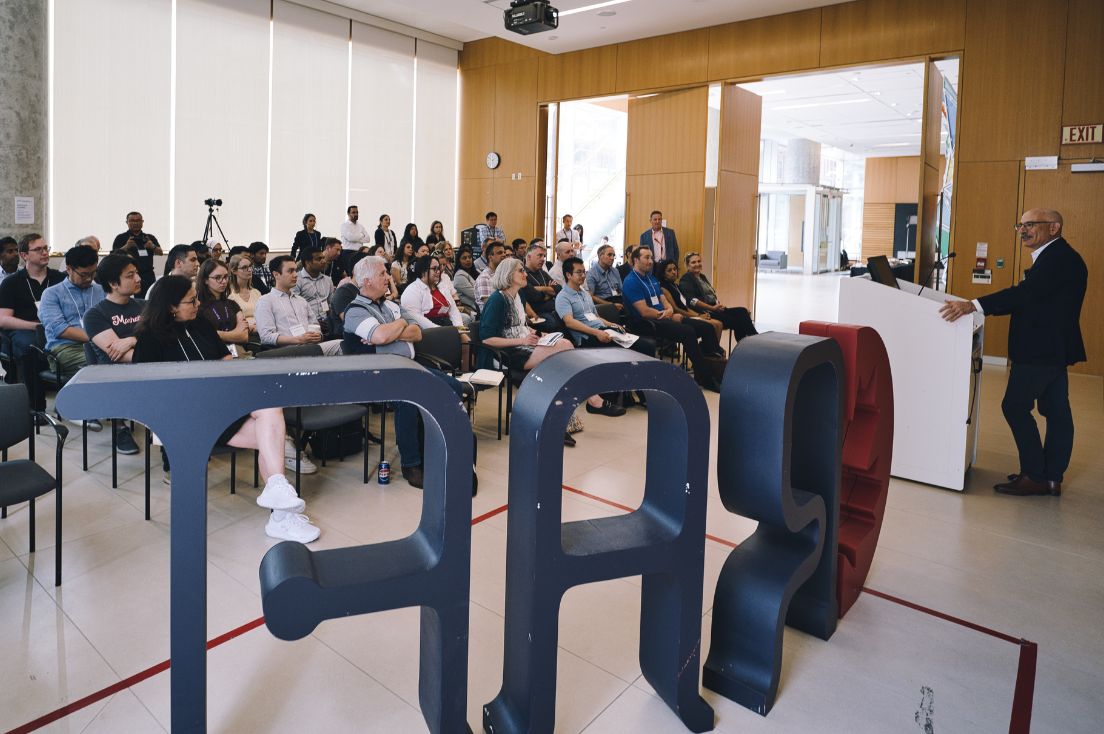
Dr. Shawna Pandya testing the handheld 3D printer during a reduced-gravity flight aboard the National Research Council of Canada’s Falcon aircraft.
New grant to advance CRAFT technology towards deployment in space.
A CRAFT-led team of researchers has been awarded a grant from the Canadian Space Agency to advance the development of a handheld 3D printer for the treatment of severe skin burns during deep-space missions to distant destinations such as the moon or Mars.
The printer uses a ‘bioink’ to fabricate and deposit sheets of living engineered skin directly onto burns to promote healing, while reducing scarring and skin contracture. This technology, developed in Prof. Axel Guenther’s lab at the University of Toronto, is better suited for treating burns and other wounds in space, than other 3D printer technologies that have been recently evaluated on the International Space Station.
“Our ‘made-in-Canada’ 3D printer is portable, smaller and faster than other bioprinters in space, and eliminates the significant challenge of handling extremely fragile 3D-printed human tissues in the reduced gravity environment of spaceflight” says Sushant Singh, a senior PhD student at the University of Toronto who is part of the team leading the proposed work.
The grant will enable Prof. Guenther and his colleagues to evaluate the function of an upgraded 3D printer and enhanced bioink during reduced gravity flights aboard the National Research Council of Canada (NRC)’s Falcon aircraft. In parallel, the ability of enhanced bioink to promote healing and reduce scarring will be confirmed. This work and its findings will bring the technology one step closer to deployment for clinical use in space and on earth.
The project and the technology being advanced have the potential to generate significant benefits for Canadians. In the short-term, the project will provide 16 Canadian trainees with new knowledge, skills, and hands-on experience in space research, space-like missions, and technology transfer. In the long-term, the handheld 3D skin printer will help make Canada a leader in deep-space astronaut healthcare, and has the potential to improve the care and health outcomes associated with severe burns and chronic wounds in hospitals, as well as in rural and remote communities across Canada.
The proposed work will be led a multidisciplinary team of researchers, including Prof. Guenther, Assistant Prof. Aaron Persad at the University of Maryland Eastern Shore, Prof. Boris Hinz at Unity Health Toronto, Dr. Teodor Veres at the NRC’s Medical Devices Research Centre, and Dr. Shawna Pandya, the Director of the Space Medicine Group at the International Institute for Astronautical Sciences (USA), who brings extensive expertise in space medicine and austere environment research.

Left: Sushant Singh, a PhD student in the Dept. of Mechanical & Industrial Engineering at the University of Toronto. Right: Prof. Axel Guenther giving a demonstration of an earlier model of his team’s handheld 3D printer for engineered skin.




